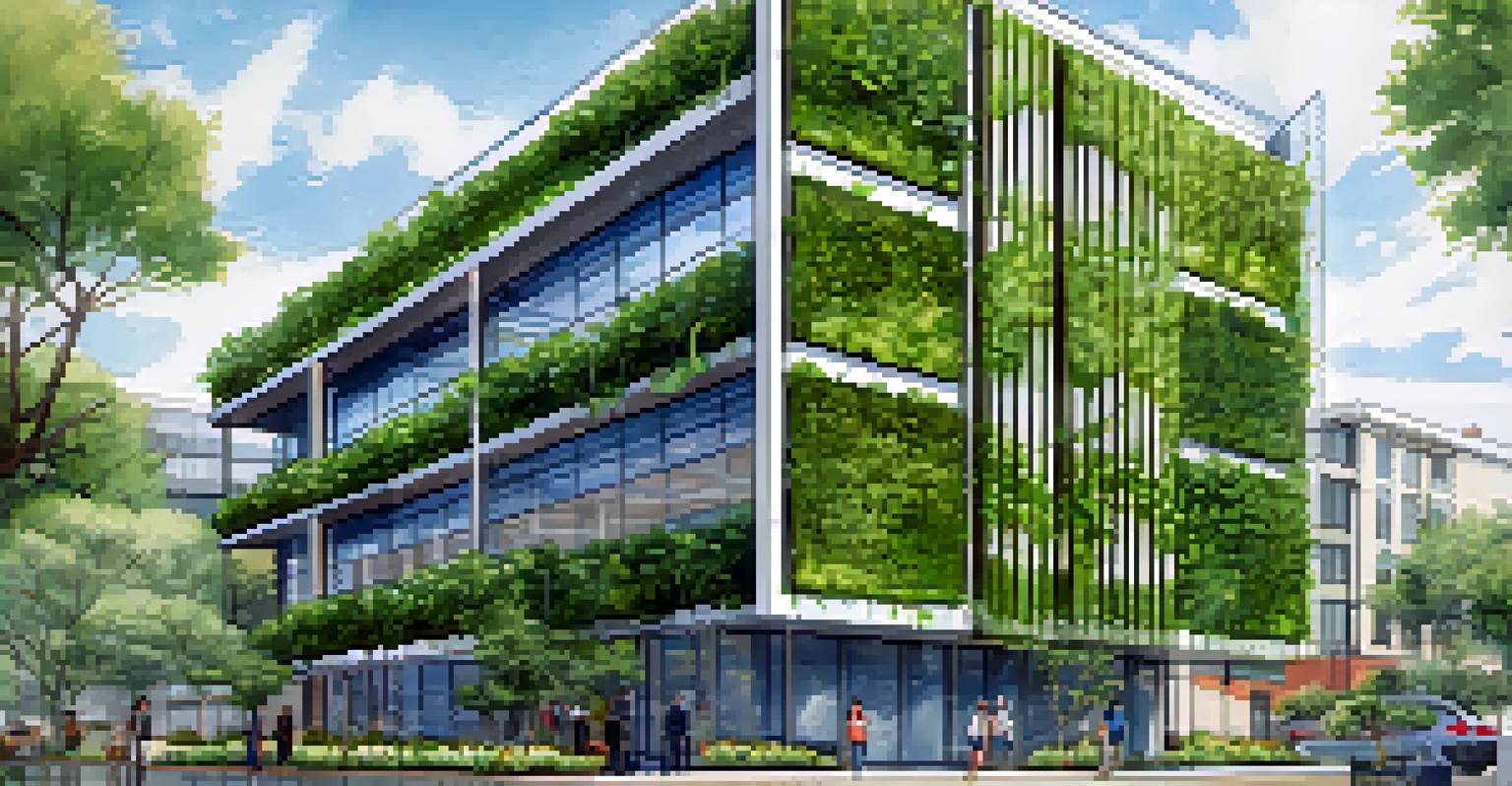The Impact of Climate Change on Austin's Urban Planning

Understanding Climate Change and Its Local Impact
Climate change refers to long-term shifts in temperatures and weather patterns, largely driven by human activities. In Austin, this means rising temperatures, increased flooding, and more severe droughts. These changes not only affect the environment but also challenge the city's infrastructure and resources.
The climate crisis is not a debate, it’s a reality we must confront head-on.
For instance, intense rainfall can overwhelm existing drainage systems, leading to flash floods. Meanwhile, prolonged heat can exacerbate energy demands, straining the local grid. Understanding these impacts is crucial for city planners as they work to create resilient urban spaces.
Ultimately, recognizing the local manifestations of climate change empowers Austin's leaders to take proactive steps toward sustainable urban planning, ensuring the city remains a vibrant place for all its residents.
Austin's Urban Growth: Opportunities and Challenges
Austin's rapid growth presents both opportunities and challenges in the face of climate change. The city is expanding, with new developments popping up regularly, but this growth must be balanced with environmental considerations. Urban planners are tasked with integrating green spaces and sustainable practices into the design of new neighborhoods.

For example, incorporating parks and green roofs helps absorb rainwater, reducing runoff and flooding risks. Additionally, promoting public transportation reduces vehicle emissions, making the city more livable. However, striking this balance requires innovative thinking and collaboration among various stakeholders.
Local Climate Change Impacts
Austin faces rising temperatures and increased flooding, necessitating resilient urban planning.
As Austin continues to grow, it’s essential to prioritize sustainable practices that not only enhance the quality of life but also protect the environment for future generations.
Sustainable Infrastructure: A Key Focus for Planners
Sustainable infrastructure is at the heart of Austin's urban planning efforts as a response to climate change. This involves designing buildings, roads, and public spaces that minimize environmental impact while maximizing efficiency. For instance, using permeable materials for sidewalks can reduce runoff and improve water quality.
We do not inherit the earth from our ancestors, we borrow it from our children.
Moreover, renewable energy sources like solar panels are being integrated into new developments, reducing dependence on fossil fuels. As infrastructure evolves, planners are increasingly focused on creating a circular economy, where resources are reused and waste is minimized.
By prioritizing sustainable infrastructure, Austin not only combats climate change but also leads by example, inspiring other cities to adopt similar practices.
Community Engagement: Empowering Residents in Planning
Engaging the community plays a crucial role in Austin's urban planning process, especially regarding climate change. Residents have valuable insights into local challenges and can contribute to solutions. Public meetings and workshops provide platforms for voices to be heard, ensuring that planning reflects the community's needs.
For instance, feedback from neighborhood associations can guide decisions on where to place green spaces or community gardens. This participatory approach fosters a sense of ownership and responsibility among residents, encouraging them to engage in sustainability efforts.
Sustainable Infrastructure Focus
Integrating sustainable practices in urban development helps Austin mitigate climate change impacts.
Ultimately, community engagement not only enhances the planning process but also builds a stronger, more resilient Austin.
Adapting to Climate Risks: Strategies for Resilience
As climate risks increase, Austin's urban planners are adopting strategies for resilience. This means developing plans that not only mitigate the impacts of climate change but also adapt to its realities. For example, retrofitting existing buildings to withstand extreme weather events is becoming a priority.
Additionally, planners are considering the placement of new developments to avoid flood-prone areas or heat islands, ensuring safer living conditions. These strategic adaptations not only protect infrastructure but also safeguard the well-being of residents.
By focusing on resilience, Austin is not just reacting to climate change; it is proactively preparing for a sustainable future.
Innovative Technologies: Tools for Climate Adaptation
Innovative technologies play a significant role in Austin's urban planning as it seeks to address climate change. Tools such as Geographic Information Systems (GIS) allow planners to analyze data related to environmental risks, helping them make informed decisions. This technology can pinpoint areas most vulnerable to flooding or heat, guiding development away from these zones.
Additionally, smart city solutions, like real-time monitoring of air quality, help mitigate pollution and improve public health. These advancements not only enhance urban planning but also engage residents by providing them with information that affects their daily lives.
Community Engagement is Vital
Involving residents in planning processes fosters a sense of ownership and enhances sustainability efforts.
Harnessing innovative technologies empowers Austin to create a more sustainable environment while adapting to the challenges posed by climate change.
The Role of Policy in Shaping Austin's Urban Landscape
Policy decisions greatly influence how Austin navigates the challenges of climate change in urban planning. Local government regulations can promote sustainable practices, such as requiring green building certifications for new developments. These policies help ensure that all new projects contribute positively to the environment.
Furthermore, incentives for renewable energy use and sustainable transportation options encourage residents and businesses to adopt greener practices. Policies that prioritize equity also ensure that vulnerable communities are included in planning decisions, addressing environmental justice.

In essence, effective policy not only shapes the urban landscape but also fosters a culture of sustainability and resilience in Austin.